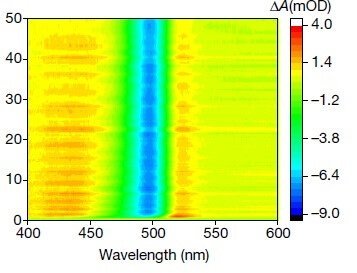Distribution control enables efficient reduced-dimensional perovskite LEDs
Ma, D., Lin, K., Dong, Y. et al.
Nature 599, 594–598 (2021).
doi.org/10.1038/s41586-021-03997-z
Light-emitting diodes (LEDs) based on perovskite quantum dots have shown external quantum efficiencies (EQEs) of over 23% and narrowband emission, but suffer from limited operating stability.
In this paper the researchers fabricate a more stable PeroLED by using fluorinated triphenylphosphine oxides to control the thickness distribution and passivate the surface of perovskite quantum wells (QWs) deposited in a film. The additive forms hydrogen bonds with the cations and gives energetically monodispersed QWs on a uniform film with high photoluminescence quantum yield. The fabricated pero-LEDs show green narrow emission with an EQE of 25.6% and an operating half-life of two hours at an initial luminance of 7,200 cd/m2.
The EQE is close to the theoretical outcoupling efficiency of these LEDs, as predicted by the simulation software Setfos. The optical simulations were performed using the Chance–Prock–Silbey model in Setfos.

